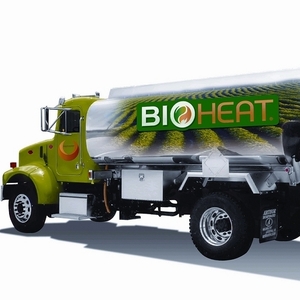NORA releases comprehensive biodiesel/Bioheat report

May 22, 2015
BY The National Oilheat Research Alliance
Pursuant to Public Law 113-79 (the Agricultural Act of 2014), Congress requires the National Oilheat Research Alliance to prepare a report on the utilization rate and analysis of the use of biofuels in oilheating equipment.
The new report, titled, “Developing a Renewable Biofuel Option for the Home Heating Sector,” was released May 13 and is most comprehensive report of its kind.
Advertisement
Some of the key components of the report are that one of the biggest transitions in heating oil has been the move to ultra-low sulfur heating oil (ULSHO). This fuel lowers maintenance, improves efficiency and reduces pollution from heating systems.
Also, the report shows that biodiesel blends at 20 percent (B20) with ULSHO are lower in greenhouse gas emissions (GHG) than natural gas when evaluated over 100 years, while blends of 2 percent (B2) or more are lower in GHG than natural gas when evaluated over 20 years.
Biodiesel blended at 5 percent would require approximately 300 million gallons of biodiesel produced per year. Assuming the biodiesel industry average of 50 million gallons per year per plant. Bioheat would be responsible for six plants built and continuously operated. Thus, nearly 270 full time jobs can be directly attributed to Bioheat.
Advertisement
Studies on the operation of Bioheat on the basic burner operation with biodiesel blends at B-20 (at least) is the same as with unblended heating oil.
NORA and the National Biodiesel Board have communicated the value of using biodiesel and selling Bioheat. The Alliance features information about Bioheat on its consumer website, OilheatAmerican.com. The NBB has a webpage, Bioheatonline.com that describes the advantages of Bioheat. Further, the Alliance and its affiliated state associations have worked to provide education on this product to consumers and retail oil companies through the use of mass media and informational brochures.
State and local governments have utilized a number of strategies to encourage the use of biofuels in their communities. It is often necessary to encourage its use with incentives or mandates to develop the infrastructure and overall market acceptance for a new fuel.
Related Stories
Avfuel Corp., the leading independent supplier of aviation fuel and services, is expanding its sustainable aviation fuel (SAF) footprint with the addition of a new, strategic supply point in Denver, Colorado—the first of its kind in the region.
ATOBA Energy and Air Moana are partnering to implement scalable solutions for the supply of SAF. The collaboration aims to ensure long-term SAF availability while supporting local initiatives to develop sustainable fuel production in Tahiti.
Kintetsu World Express Inc. has signed an additional agreement with Hong Kong, China-based Cathay Pacific Airways for the use of sustainable aviation fuel (SAF). The agreement expands a three-year partnership between the two companies.
Broco Energy on July 17 announced a new partnership with the Massachusetts Port Authority (Massport) to deliver and transition Massport's fuel tanks to renewable diesel across its various facilities.
Shell Aviation, Accenture, and Amex GBT on July 10 announced Avelia is in the process of evolving to an industry solution with independent data hosting and a multi-supplier model helping users access the GHG benefits of SAF.
Upcoming Events










